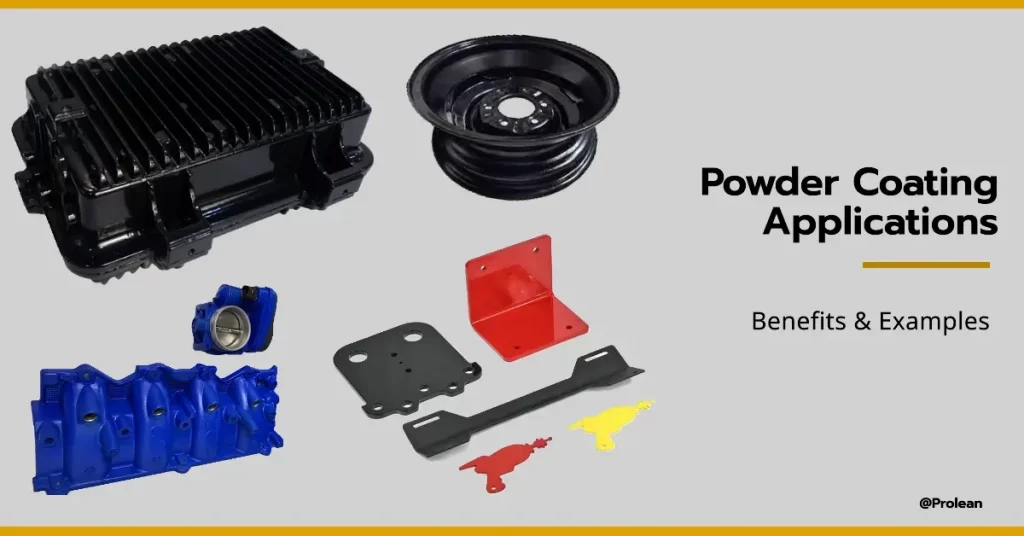
We see the powder-coated components and products around us, from our garden furniture to automotive, electrical, energy, and other industries. The numerous color options, strong bond, durability, corrosion resistance, and surface texture quality benefit powder coating applications. Moreover, powder coating finishes are emerging as the best alternative to painting or other solvent painting treatments.
Powder coating is also applicable for most of the materials, including metals, alloys, plastics, and a few composites. It adds a protective layer through electrostatic deposition, either using a spraying gun or immersing parts in a tank with charged powder, followed by curing under a specified temperature. In this article, we will elaborate on the applications of this dry surface treatment process across different sectors.
Powder Coating Finishes for Automotive Parts
The durability and corrosion resistance are two major requirements for automotive components to maintain the durability and performance of vehicles in harsh environments. Additionally, an appealing aesthetic also plays an essential role in their finishing.
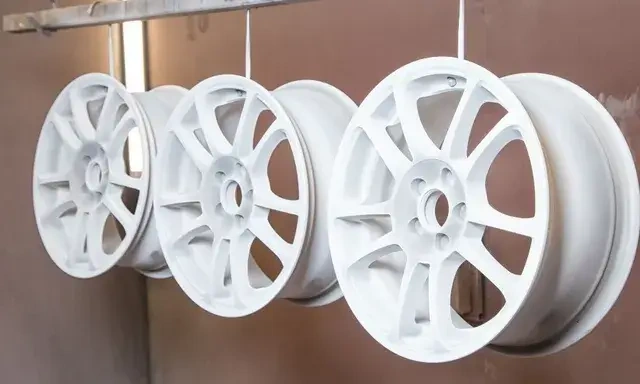
Automotive powder coating
Epoxy, polyester, acrylic, and hybrid-based powder coating automotive parts protect the surface and provide a custom appearance. Polyesters are more UV-resistant and epoxies are more tough. The mixing of the different types of powders in a specified ratio, and applying the hybrid powder charge helps to achieve the desired finish for powder coating car parts. Furthermore, it is also popular as a base primer for further painting.
In a car powder coating, parts like bumpers, door handles, suspension components, battery trays, electrical connection housing, radiators, etc. Consequently, other various cars, buses, trucks, and vans components are finished with this method.
Here is the list of powder coating automotive parts examples;
- Wheels and hubcaps
- Decorative trims
- Decorative interiors
- Oil filters
- Coil springs
- Door handles
- Mirror frames
- Brake components
- Motorbike and sportbike frames
- Alloy wheels of trucks, cars, and military vehicles.
- Public bus interiors
The flexibility of auto parts powder coatings in terms of complex geometrical substrate, layer thickness, color, and surface texture allows automotive manufacturers to customize the results. The auto parts made with high-performance plastic can be finished with a durable powder coat. Consequently, the automotive industry also needs aluminum powder coating components like window trims, wheels, body panels, etc.
Try Prolean Now!
Powder Coating for Home Appliance Parts & Products
Enclosures, panels, and even the internal components of home appliances use powder coatings. They make the surface resistant to abrasion, wear, chemicals, and water along with pleasing aesthetics. Additionally, consumer items like mobiles, laptops, and desktops are also used coating. In addition to household appliances, you can use them for surface treatment of consumer items.
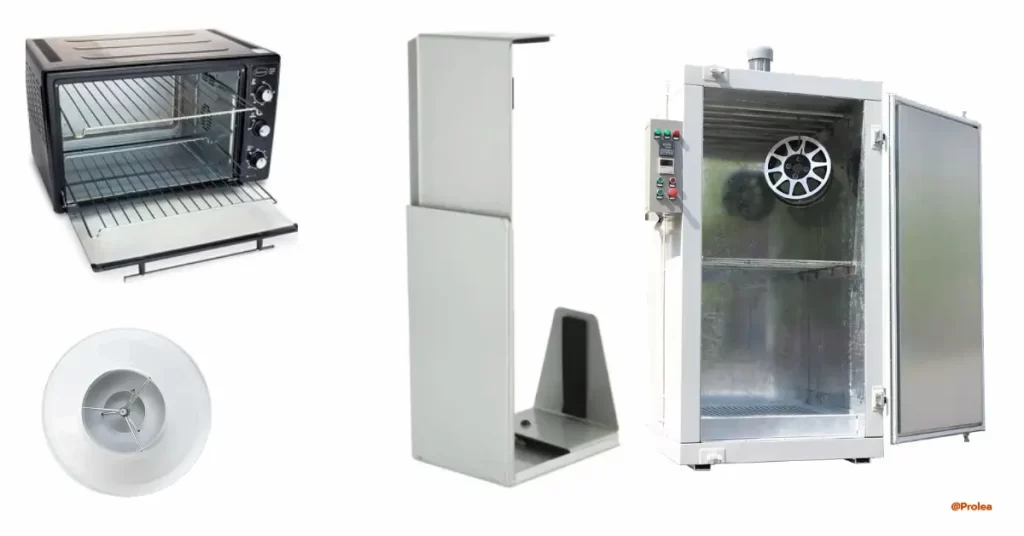
Home appliances powder coating
Here are some examples of powder-coating applications in home appliances and consumer items;
- Regrefinerator and HVAC Components
- Dishwasher racks and dryer drums
- Microwaves
- Cabineates of a freezer
- Washing machine cabinets and enclosure plates
- Body parts of a vacuum cleaner
- Water heater tanks
- Body of toaster, mixture, and other similar kitchenwares.
These applications mainly utilize thermoset-based powders like epoxy and polyurethane. A thick thermoset coating layer on these appliances provides the required surface strength and corrosion resistance over extended periods. The life expectancy is approximately more than 10 years, for both powder coating plastic and metal parts.
Architectural and Decorative Powder Coating
Polyester, acrylic, fluoropolymers, and some thermoset powders are popular in coating architectural and decorative items. The composition of pigments and additives in the powder charge determines the color or aesthetic.
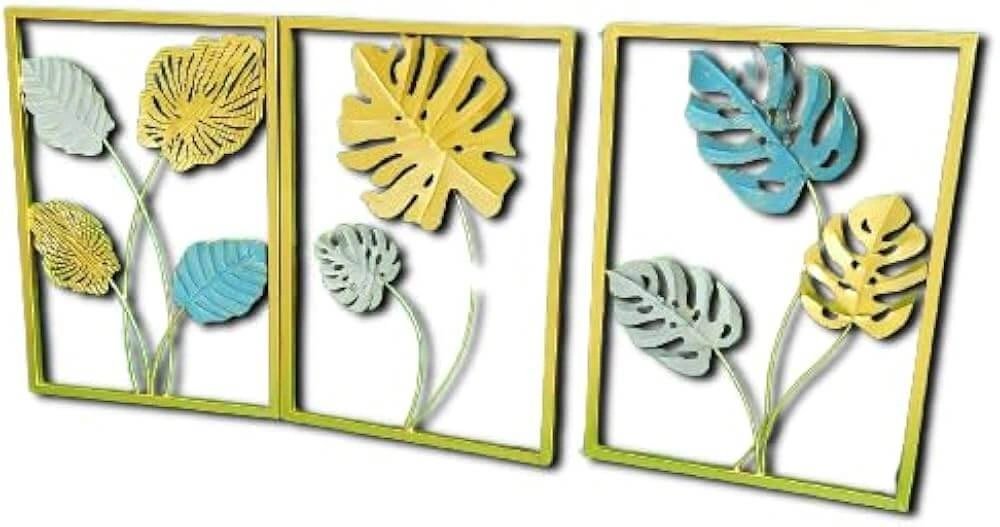
Powder-coated decorative item
We can see the powder coating of window frames, light poles, outdoor furniture, carts, and other items around us. Weather resistance, UV exposure resistance, and chemical resistance of thermoplastic coating extend the lifespan of such parts and products.
The following are the common application examples;
- Metal or powder coating plastic facades
- Architectural Signage
- Roofing parts and sheets
- Door frames, ladders, and railing systems
- Decorative metal screens
- Fencing and gate
- Lighting fixtures
- Outdoor furniture
Powder Coating for Electrical Components and Products
In automotive applications, we have mentioned battery trays and electrical connection housing as examples of car powder coating. However, it has numerous uses in the electrical industry itself. Especially, this finish is popular for electrical housing and insulation. The thick coating can insulate the wires and connections.

Powder-coated electrical enclosure
The epoxy and epoxy-polyester hybrid powders are used in electrical power coating applications. Epoxy powders provide superior chemical resistance and strong adhesion for circuit boards and electrical enclosures. On the other hand, hybrid powders enhance the weather resistance.
The list below outlines the powder coating applications in the electrical industry;
- Electrical junction boxes
- Equipment and device enclosures
- Electrical motor housing
- Powder distribution compartments
- Cable trays
- Supply units and cabinets
- Relay boxes
- Insulators
- Sensor housings
Not all types of powder coating are electrical insulators, epoxy-based powders provide insulation. They are also more thermally stable and do not lose their properties with frequent temperature fluctuations.
Medical-Grade Powder Coating Applications
Typically, medical equipment, trays, and furniture utilize this finishing method for their durability. Thermoplastic powders are preferred for indoor diagnostic and other instrument housing, whereas epoxy or hybrid coatings are suitable for medical furniture and treys.
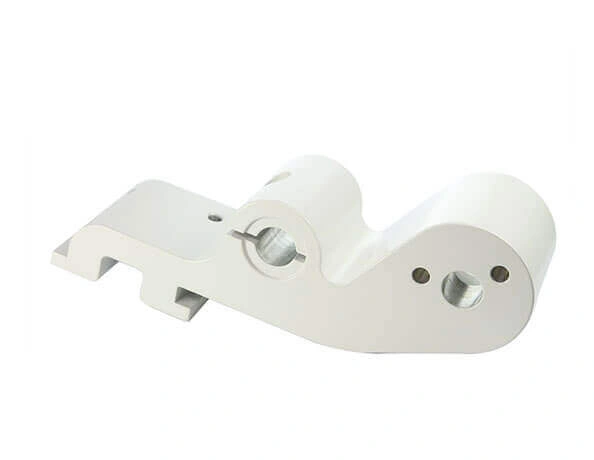
Custom medical part the powder coat finish
An electrostatic spray deposits the powder charge to the surface by precisely controlling the layer thickness. Then, thermal curing establishes the adhesive bond that lasts for several years. Unlike liquid coatings, powder coatings offer a smooth and uniform finish without solvent, which protects them from wear and harsh cleaning processes.
- Medical beds, trolleys, trays, carts, and dental chairs.
- Ultrasound, anesthesia, ventilator, MRI, and other machine component s machines
- Diagnostic equipment housing
- Stethoscopes
- Defibrillators
- Infusion pumps
- X-ray tables
- MRI machine parts
- Prosthetics and surgical clamps
Furthermore, compliance with standards like ISO and FDA is essential for medical powder coating parts & products. For example, ISO10993 and ISO10993-1 are the standard safety standards, and PTFE—Teflon® -based powders are FAD-approved.
Try Prolean Now!
Powder Coating of Agricultural Machinery and Tools
The efficient costs and durability of finish are two main benefits of agricultural powder coating. It protects the machinery, agricultural vehicles, and tooling components from harsh environmental conditions and supports heavy-duty applications. You can apply thermoplastic, thermoset, or hybrid powder material based on factors like UV, chemical, dirt, and moisture exposure.

Powder coating on agricultural machinery
The application includes;
- Tractor frames and body parts
- Fertilizer spreaders
- Metal plows
- Header and body of harvesting equipment
- Pesticide sprayer
- Components of irrigation systems
- Livestock feeders
Which one is Better for Automotive Applications? Powder Coating or Anodizing
The anodizing process involves developing an integrated protective layer of metal oxide on the surface by the electrochemical process. The anodized layer acts as the barrier between automotive parts and the external environment.
In anodizing vs powder coating, powder coating is preferred over anodizing for auto parts. It offers superior protection against corrosion, road salt, chemicals, and weather conditions. Consequently, it resists chipping and scratches.
Get High-Quality Powder Coating Parts from ProleanTech
Are You Looking for the Powder Coating Service? At ProleanTech, we have several powder options to cater to your surface finishing needs. Our experience of working in industrial manufacturing and surface treatment ensures the highest protection and pleasing aesthetic of substrate parts, including automotive, appliances, medical, agriculture, electrical, and electronics.
We can finish, aluminum, stainless steel, titanium, copper, plastics, and many composite parts. No matter whether they are CNC machined, sheet metal fabricated, extruded, injection molded, or cast. So, upload your design and get an accurate quote from our engineers.
Try Prolean Now!
Conclusion
Powder coating applications are widespread across automotive, electrical, electronics, medical, etc. This finishing method provides attractive aesthetics and protection from environmental and operational conditions. You can choose the right type of powder and coating thickness to achieve your desired specifications.
FAQs
Are automotive rims powder-coated?
Yes, automotive rims are powder-coated to make them durable, corrosion-resistant, and attractive finish.
Can I paint powder-coated metallic and plastic components?
Yes, you can paint over powder-coated metallic and plastic surfaces. In different industrial applications, it is used as a primer or base surface for the painting.
Which one is the preferred powder for outdoor applications?
Polyester-based powders are preferred for outdoor applications due to their superior weather resistance, UV stability, and durability.
Is powder coating finish environmentally friendly?
Yes, powder coating is environmentally friendly. It produces minimal waste and contains no harmful solvents or volatile organic compounds (VOCs).




0 Comments